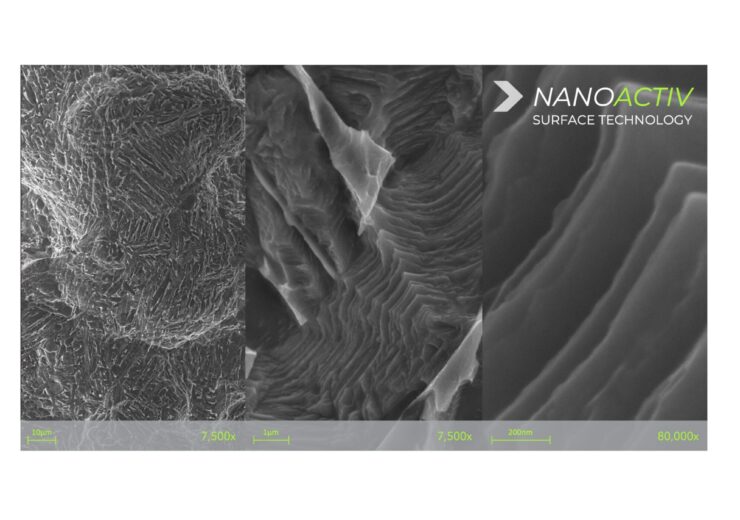The neoWave interbody technology leverages a patented 3D-printed lattice design instead of a conventional implant framework or solid walls to sustain strength and reduce device stiffness

A NANOACTIV surface imaging at 500x, 7,500x and 80,000x. (Credit: Business Wire)
Xēnix Medical has secured the US Food and Drug Administration (FDA) 510(k) clearance for nanotechnology designation of its neoWave range of interbody fusion implants which features proprietary NANOACTIV surface technology.
The neoWave interbody technology uses a patented 3D-printed lattice design instead of a conventional implant framework or solid walls to maintain strength and reduce device stiffness.
Xēnix Medical said that the nanotechnology designation improves claims for the neoWave cervical and lumbar interbody devices with NANOACTIV surface. According to the US-based surgical implant maker, more than 7,000 of these have been implanted in the US.
The NANOACTIV micro- and nano-roughened surface is designed to enhance fixation to adjacent bone and has features of nano-scale surface at a nanometer level.
The surface technology has shown its ability to elicit an endogenous cellular and biochemical response compared to an untreated surface, said Xēnix Medical.
It differentiates human mesenchymal stem cells through the osteogenic lineage and production of a mineralised matrix in vitro.
The NANOACTIV implant surface can be qualified as a nanotechnology, as outlined in the FDA’s nanotechnology guidance document, said the company.
Xēnix Medical president Ryan Phillips said: “Receiving nanotechnology clearance for the neoWave interbody systems is an incredible milestone and achievement for Xēnix, elevating the neoWave implant systems into a distinct device category shared only by a few companies in the industry.
“As we actively develop a complete line of neoWave interbody devices, the NANOACTIV surface will be a dominant enhancement of future implant systems.
“The unique combination of a nanotechnology surface and completely latticed implant presents a significant breakthrough in treating patients that require interbody fusion. We believe this designation evidences the potential benefit of nanotechnology to patient outcomes and improving care.”
The neoWave matrix has been shown to expand endplate contact surface area and resistance to subsidence in comparison to a similar device with a solid framework and/or conventional anti-migration teeth, according to the surgical implant maker.
